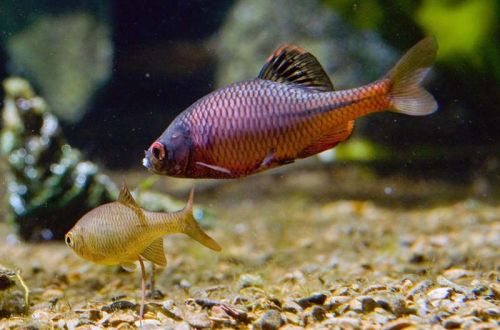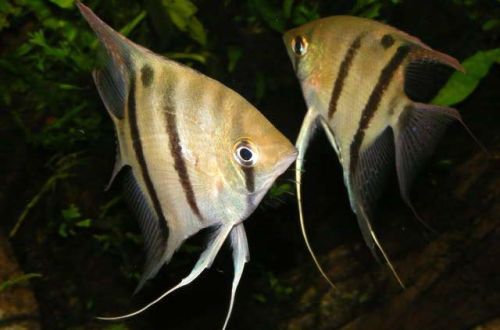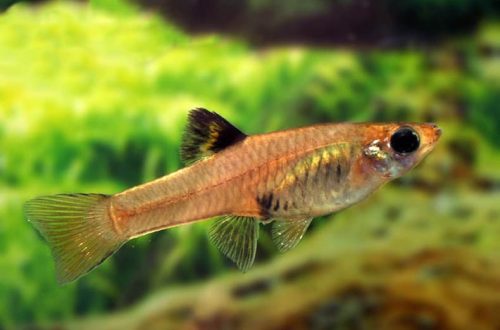
Rybka Gorchak
The Gorchak fish, scientific name Rhodeus amarus, belongs to the family Cyprinidae (Cyprinidae). A typical representative of European water bodies. It occurs mainly in lakes and rivers in areas with a slow flow among thickets of plants. The natural habitat is completely dependent on the abundance of aquatic bivalve molluscs of the Unionidae family. Read more about the relationship between fish and shellfish below.

Contents
Description
Adults reach a length of about 9 cm. The fish have a high large body and short fins. The body color is silvery with a dark back with a green sheen and a lighter belly. A blue stripe runs from the middle of the body and further to the tail.
During the spawning period, the males change. Iridescent, red and pink shades begin to predominate in the color of the body. Tubercles appear on the head. In females, a long process, the ovipositor, grows from the base of the anal fin.
Behavior and Compatibility
Peaceful calm fish. Given the peculiarities of keeping Gorchak, compatible species include only those that are able to live in unheated aquariums, for example, Goldfish.
Brief information:
- The volume of the aquarium is from 80–100 liters.
- Temperature – 18-22°C
- Value pH — 7.0–7.4
- Water hardness – medium and high hardness (8-20 dGH)
- Substrate type – sandy
- Lighting – subdued
- Brackish water – no
- Water movement – moderate or weak
- The size of the fish is about 9 cm.
- Nutrition – any with a high content of herbal supplements
- Temperament – peaceful
- Content alone, in pairs or in a group
Maintenance and care, arrangement of the aquarium
They are considered unpretentious and hardy species. Equally successfully live both in open ponds and home aquariums. Successful maintenance depends on maintaining a stable hydrochemical composition of water at relatively low temperatures. The main threat is overheating; fish should not be allowed to stay above 22 ° C for a long time. For this reason, there is no need for a heater.
In the design, it is desirable to provide places for shelters with dense aquatic vegetation, for example, from thickets of wallisneria, pondweed, elodea, water lilies. Additionally, you can place snags, heaps of stones. Any soil. However, if breeding is planned, then it is necessary to place a soft substrate suitable for the life of bivalves.
The service is standard and no different from the care of a tropical freshwater aquarium. Regular removal of accumulated waste, weekly renewal of part of the water with fresh water and preventive maintenance of equipment, primarily filtration systems, are recommended.
Food
In nature, the basis of the diet are algae, aquatic plants. In the home aquarium, they can be accustomed to the popular dry food flakes and pellets, provided they contain a high amount of herbal ingredients.
Breeding / breeding
Gorchaki have a unique breeding strategy. In the course of evolution, in order to protect offspring, fish have learned to lay eggs in the cavity of bivalve mollusks. With the onset of the mating season, which in nature begins at the end of winter, the beginning of spring, the females grow the above-mentioned ovipositor, resembling a long tube. With the help of a tube, the female places a portion of eggs between the open shells of the mollusk, and the male simultaneously sprays a cloud of milk. Up to 5 eggs are placed at a time. Spawning can take several weeks.
The incubation period takes place inside the shell. The mollusk does not experience a negative impact from this. On the contrary, the fry that have appeared carry its larvae on themselves, thereby contributing to an increase in habitats.





